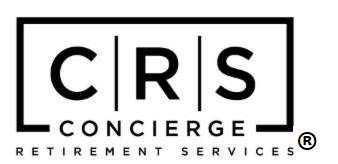
I was leading a compliance workshop and someone in the back raised their hand.
“What’s the number one thing that trips people up?” she asked.
“Missed deadlines: Late Filings for Form 5500. Not providing your plan participants with the required annual notices. Not giving out the Summary Annual Reports (SARs). If you’re relying solely on your recordkeeper or payroll provider to handle this—you’re already playing catch-up. Build a compliance calendar. Assign responsibilities. Don’t assume anyone else is managing these deadlines”
Another hand shot up. “What about testing?”
“Problem #2 is Failed Nondiscrimination Testing. ADP. ACP. Top-heavy tests. If non-highly-compensated employees aren’t participating in the plan at the proper levels, your plan can fail—and your executives will get refunds instead of retirement savings. Auto-enroll. Auto-escalate. Rethink your match formula if necessary.”
“Can we talk about payroll delays?” someone else asked.
“Late employee salary deferral remittances are problem #3. If employee deferrals don’t hit the plan promptly, you’ll be using their wages improperly, which means that you have inadvertently engaged in a prohibited transaction. That’s a big no-no in the eyes of the Department of Labor. It doesn’t matter if it’s a payroll system glitch or a transition error—late is late.”
A woman near the front spoke up. “We ended up with a mismatch between our plan doc and what payroll was doing.”
“Problem #4 happens way too often,” I confirmed. “ Not following the terms of the plan is a sneaky one. Your plan says bonuses are included in deferrals, but if payroll isn’t withholding salary deferrals from their bonuses, you’re out of compliance. If you haven’t reviewed your plan document since your last TPA change or payroll update—do it yesterday!”
I paused to let the attendees think, then continued: “And last we come to Mishandled Loans and Distributions. Improper hardship documentation. Late loan repayments. Untracked self-certifications. These are audit triggers. Create a solid process and stick to it.”
Someone laughed nervously. “That’s a lot to keep up with.”
“That’s why it’s best not to wait for a regulator to remind you. “Conduct plan audits and regular internal reviews. Insist on good recordkeeper communication. And make sure someone owns compliance. If everyone owns it… no one does.”
The room fell quiet.
A small woman in the back looked crestfallen. “I’m going to be the one to admit it though I suspect I’m not alone here. How on earth are we supposed to keep up with this while we manage all our other HR duties? We’re not tax lawyers and retirement plan experts; at least I’m not!”
I smiled. “The good news is no one expects you to be. Work with an expert retirement plan consultant who knows how to keep your plan relevant and up-to-date—someone who does understand the constantly changing world of tax laws—someone who will file the forms, send the reminders, and keep you on top of the complexities so you can do what you do best.
“I shared the top five compliance pitfalls—missed deadlines, failed nondiscrimination testing, late contributions, incomplete plan documents, and mishandled loans and distributions—and yes, those can be a lot to deal with, but I also shared a quick and easy way to manage those hurdles with a simple phone call. Once you’re aware of the problems, you can call someone in to fix them.”
